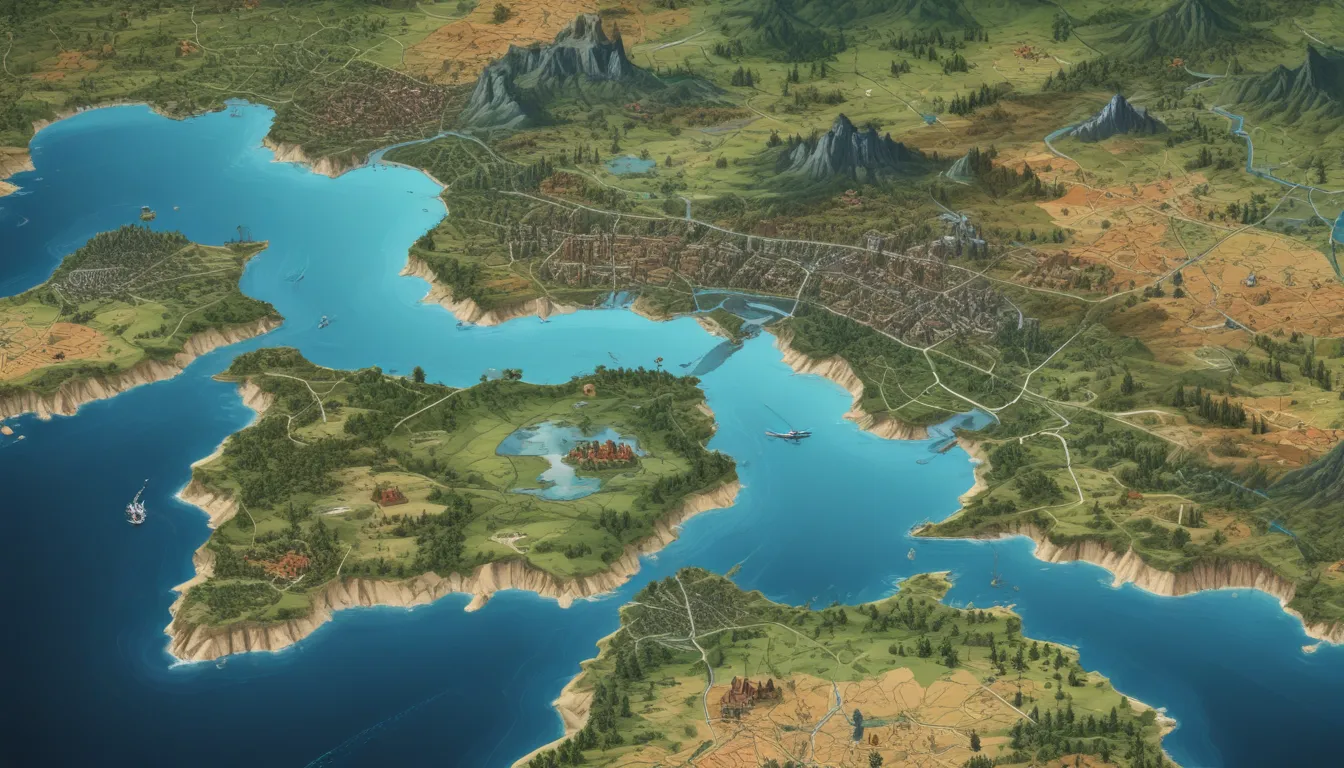A Note About Images: The images used in our articles are for illustration purposes only and may not exactly match the content. They are meant to engage readers, but the text should be relied upon for accurate information.
In the age of technological advancements, Geographic Information Systems (GIS) have emerged as a transformative tool revolutionizing our understanding and analysis of geographical data. From urban planning to wildlife conservation, GIS technology is a pivotal element in various sectors, offering a plethora of applications and benefits. Whether you have a keen interest in geography or are simply curious about the potential of technology in spatial data mapping and analysis, prepare to be captivated by these 10 captivating facts about GIS that showcase its significance and impact on our world.
Unraveling the Roots of GIS:
The origins of GIS can be traced back to the 1960s when it was conceived as a computer-based method for capturing, storing, manipulating, analyzing, and presenting geospatial data. Since its inception, GIS has evolved into a potent tool utilized across industries such as urban planning, environmental studies, and emergency management, revolutionizing the way we navigate and interpret geographical information.
The Art of Visual Storytelling with GIS:
At the core of GIS lies its ability to create detailed maps and visualizations by overlaying various layers of data, ranging from topography and land use to demographics. These intricate maps not only serve as visually appealing representations but also aid in decision-making processes, resource management, and spatial analysis, offering valuable insights into geographical landscapes.
Navigating the World with GIS Technology:
GIS technology plays a crucial role in powering GPS navigation systems, providing users with real-time directions and location-based services. By integrating GIS data encompassing road networks, points of interest, and traffic patterns, GPS systems calculate the optimal routes, revolutionizing the way individuals navigate and explore the world with utmost efficiency and accuracy.
GIS: A Guardian Angel in Disaster Management:
During times of crisis, GIS emerges as a lifeline in disaster management, empowering emergency response teams with vital data analysis regarding affected areas, population density, infrastructure, and potential hazards. By leveraging this information, relief efforts can be organized, rescue operations can be coordinated, and evacuation routes can be meticulously planned, ultimately saving lives and mitigating the impact of calamities.
Preserving Biodiversity Through GIS:
In the realm of wildlife conservation and ecological research, GIS stands as an indispensable tool facilitating the analysis of habitat patterns, tracking animal movements, and identifying regions rich in biodiversity. By unraveling the spatial relationships between species and their habitats, conservationists can craft effective strategies to safeguard vulnerable ecosystems, contributing to the preservation of biodiversity and ecological balance.
Crafting Sustainable Cities Through GIS:
Urban planning embraces GIS as a guiding beacon, empowering planners to make informed decisions regarding zoning, land use, and infrastructure development. By mapping demographic data, transportation networks, and environmental factors, GIS aids in designing sustainable cities, ensuring efficient resource allocation and fostering the creation of livable communities that harmonize with the environment.
Precision Farming: Harvesting Success with GIS:
The agricultural sector reaps bountiful benefits from GIS technology, particularly in the realm of precision farming. By scrutinizing soil properties, climate conditions, and crop health, farmers can optimize their land management practices, determining precise input requirements such as water, fertilizers, and pesticides. This precision leads to enhanced crop yields and reduced environmental impact, revolutionizing farming practices.
Fighting Crime with GIS Insights:
Law enforcement agencies harness GIS data as a potent weapon in crime analysis, aiding in identifying crime patterns, hotspot locations, and resource allocation strategies. By visually mapping crime incidents, GIS provides a spatial perspective on criminal activities, enabling strategic deployment of police forces, improving response times, and enhancing public safety through informed decision-making.
Harmonizing with Nature Through GIS:
GIS plays a pivotal role in natural resource management by facilitating the analysis and preservation of forests, water bodies, and mineral deposits. By integrating GIS with diverse data sources, policymakers and scientists can make informed decisions on resource management practices, ensuring sustainable extraction and conservation efforts that safeguard our natural heritage.
Illuminating the Path in Public Health With GIS:
In the domain of public health, GIS emerges as a beacon of hope in disease mapping and analysis, tracking disease outbreaks, monitoring infection spread, and analyzing healthcare access. By mapping these critical elements, GIS empowers public health professionals to devise targeted interventions, enabling proactive disease control, timely responses, and community protection against health threats.
Embracing the Power of GIS: A Transformative Journey:
In conclusion, Geographic Information Systems (GIS) unveil an enthralling world of possibilities, enriching our understanding and interpretation of geographical data. Through the lens of GIS technology, hidden patterns are unearthed, informed decisions are made, and complex spatial relationships are comprehended with precision and clarity. Embrace the magic of GIS and embark on a journey of enlightenment as we explore ten mesmerizing facts that encapsulate its significance and impact on our world.
FAQs About Geographic Information Systems (GIS):
-
What is GIS?
Geographic Information Systems (GIS) are computerized systems that capture, store, analyze, and display geographical data. -
How is GIS used in urban planning?
GIS is utilized in urban planning to analyze existing infrastructure, determine locations for new developments, and evaluate environmental impact. -
Can GIS aid environmental management?
Yes, GIS plays a pivotal role in environmental management, facilitating monitoring of environmental changes, wildlife tracking, and identification of conservation areas. -
Is GIS exclusive to professionals?
No, GIS is evolving to become user-friendly, with various applications and platforms accessible for individuals to explore and leverage GIS data. -
Can GIS be accessed on mobile devices?
Yes, numerous GIS applications and platforms are compatible with mobile devices, enabling users to access and utilize data seamlessly in the field.
Explore the world of GIS with an inquisitive spirit, embracing the wealth of knowledge and insights it offers as you navigate through the realms of geography, technology, and innovation. Let the transformative power of GIS illuminate your path, guiding you towards a deeper understanding of our spatially diverse world.






